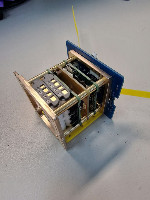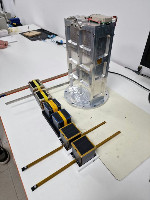| Spacecraft | ERMINAZ-1U |
|---|---|
| Type | PocketQube |
| Units or mass | PocketQube 1p |
| Status | not launched, expected in 2025 |
| Launcher | RFA One |
| Organization | AMSAT-Germany |
| Institution | Non-profit |
| Entity type | Academic / Education |
| Headquarters | Germany |
| Oneliner | |
| Description | |
| Sources | [1] [2] |
| Photo sources | [1] [2] |
Last modified: 2024-12-28


